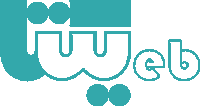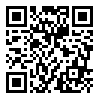

Volume 1, Issue 2 (9-2025)
مکتب نقدنظر 2025, 1(2): 34-39 |
Back to browse issues page
Download citation:
BibTeX | RIS | EndNote | Medlars | ProCite | Reference Manager | RefWorks
Send citation to:



BibTeX | RIS | EndNote | Medlars | ProCite | Reference Manager | RefWorks
Send citation to:
Hashemizadegan S A. The Necessity of Escaping from Imitative Science. مکتب نقدنظر 2025; 1 (2) :34-39
URL: http://jcr-sj.com/article-1-33-en.html
URL: http://jcr-sj.com/article-1-33-en.html
Ph.D. in Landscape Architecture, University of Tehran
Abstract: (25 Views)
In some contemporary currents of action and critique within the fields of architecture and urban planning in the country, it is observed that certain stakeholder groups—including the public, experts, and officials—attribute the root of many dissatisfactions and problems to a failure to adhere to modern standards and sciences. This note, while emphasizing the conceptual distinctions between space, place, and pre-place, seeks to invite scholars to recognize a crucial point: the existence of differences in interpretation, change, and conflict, viewed as a schizophrenic phenomenon, is not merely an incidental aspect of the city. Rather, this schizophrenic quality is a constitutive and affirmative property of urban life itself. Consequently, standards, conceived as an imitative science, lack the capacity to comprehend such a phenomenon. It is therefore necessary to adopt a new strategy regarding standards that have emerged from other, non-territorial forms of life. The present note attempts to explore this new strategy, which aims to escape from imitative science, within the confines of the described problem, drawing upon Gilles Deleuze’s book, Essays Critical and Clinical. To this end, certain differences between the “Deconstructive” and the “Critical and Clinical” perspectives are elucidated, and the issue of the urban façade is discussed as a case in point.
Type of Study: Research |
Subject:
General
Received: 2025/09/6 | Accepted: 2025/09/1 | Published: 2025/09/1
Received: 2025/09/6 | Accepted: 2025/09/1 | Published: 2025/09/1
| Rights and permissions | |
 |
This work is licensed under a Creative Commons Attribution-NonCommercial 4.0 International License. |



